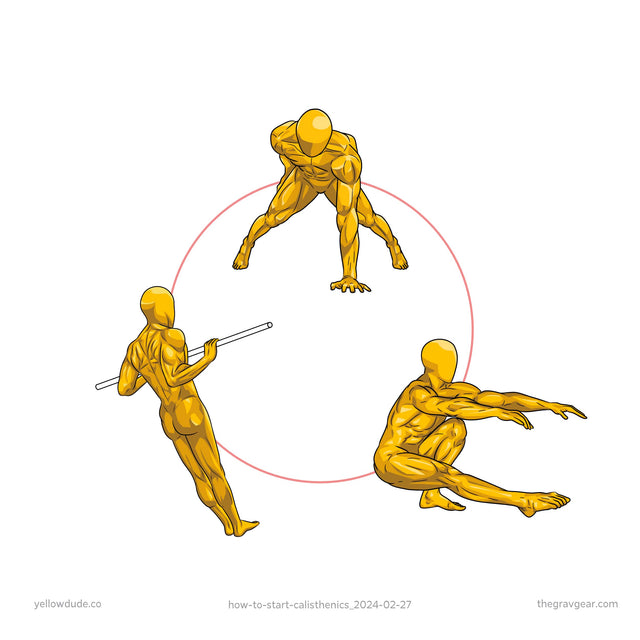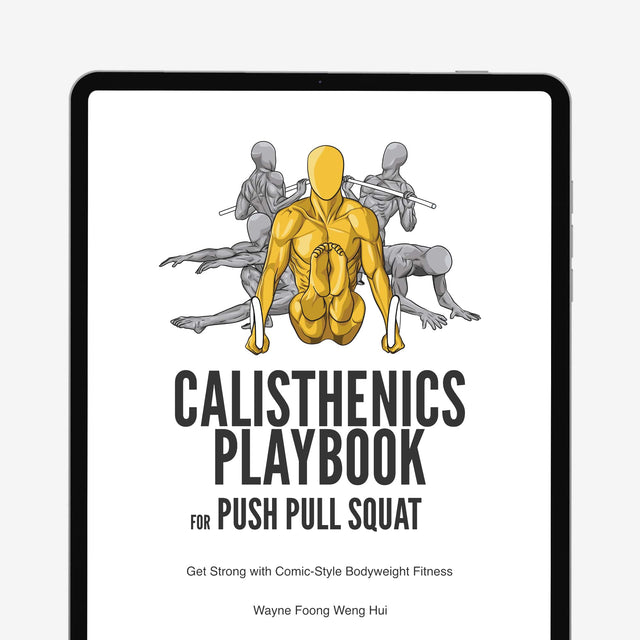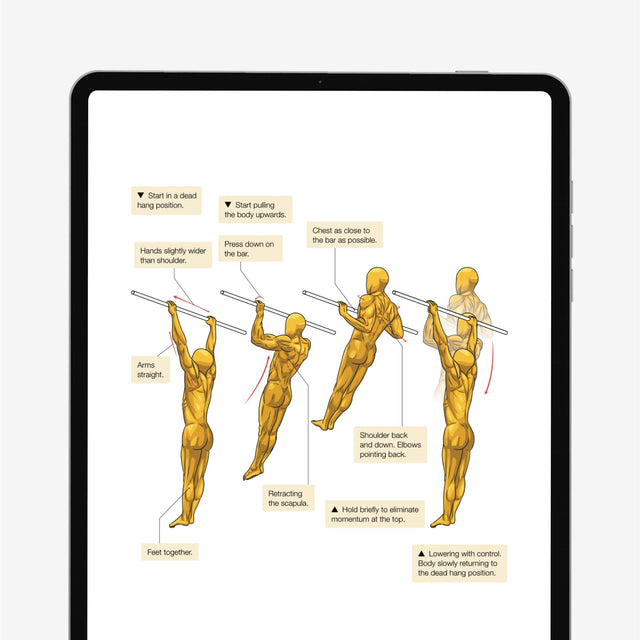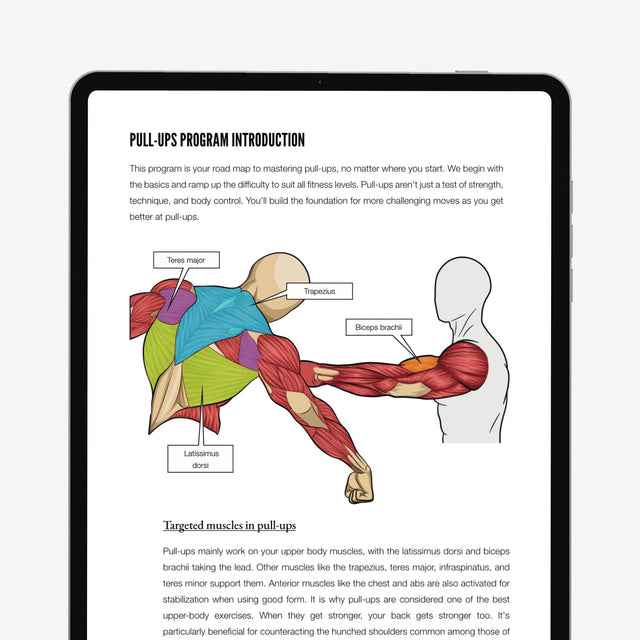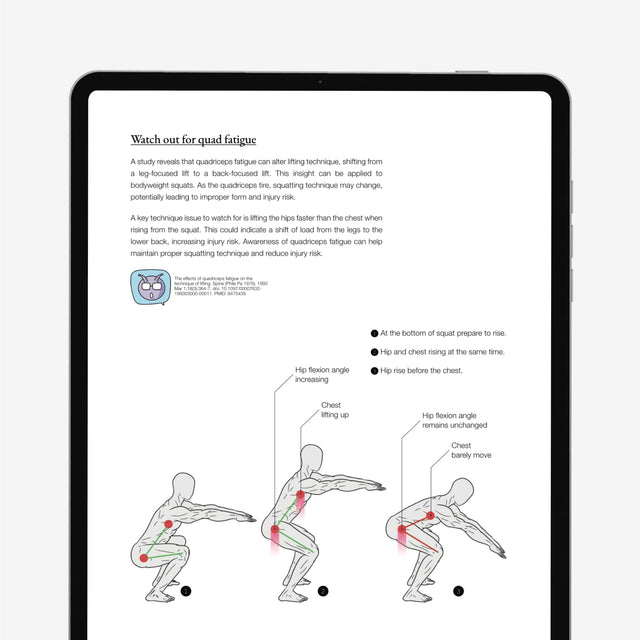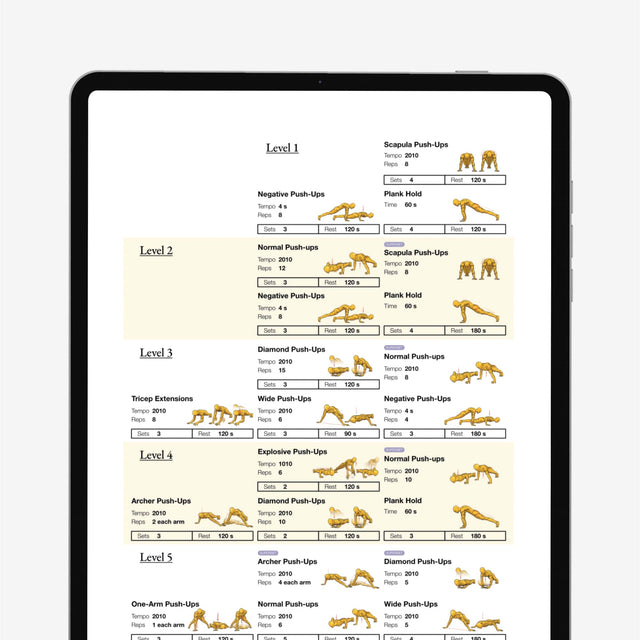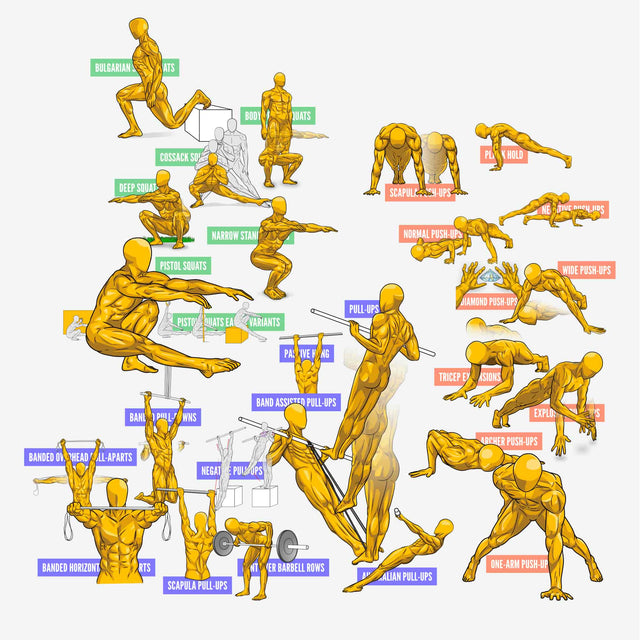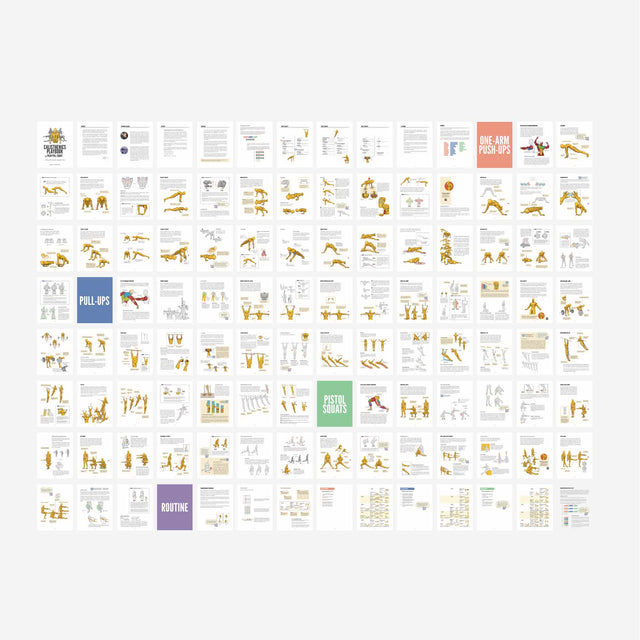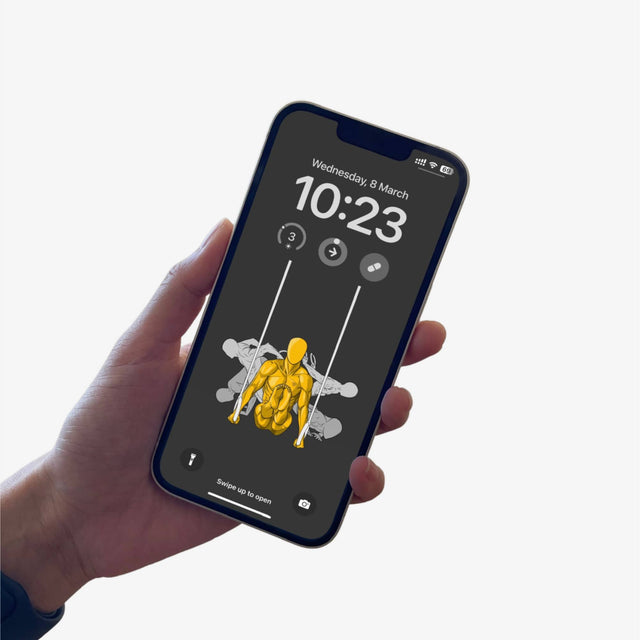How to Start Calisthenics. Explain in 6 Minutes, 42 Seconds.
Let me guess: You're here because you've heard about calisthenics and you're intrigued by the idea of getting fit using just your body weight.
In essence, when you're asking 'How do I start calisthenics?' you're really wondering 'Can I actually get fit and enjoy this form of exercise?'
That's a valid concern, but it's not the mindset we want to start with. In this comprehensive guide, we're going to shift your perspective and show you how calisthenics can be a fun, effective, and rewarding way to get in shape.
Understanding the basics
Calisthenics is all about using your body weight for strength training. It's different from weightlifting because it uses compound movements that work several muscle groups at once. This makes it a great way to build strength, flexibility, and overall fitness. Let’s start with some key terms and concepts:

- Bodyweight Exercises: These are exercises that use your own body weight as resistance, such as push-ups, pull-ups, and squats.
- Reps (Repetitions): The number of times you perform an exercise in a row.
- Sets: A group of reps performed without rest. For example, doing 10 push-ups (reps) and then taking a break before doing another 10 push-ups would constitute two sets.
- Progressions: These are variations of exercises that increase in difficulty as you get stronger. For example, moving from knee push-ups to regular push-ups.

One of the most critical aspects of calisthenics is maintaining proper form and technique. This ensures that you're working the right muscles and reduces the risk of injury. Here are some general tips:
- Keep your core engaged to stabilize your body during exercises.
- Focus on slow, controlled movements rather than speed.
- Breathe consistently, exhaling during the exertion phase of the exercise.

By understanding these basics, you're laying the foundation for a successful calisthenics journey. In the next section, we'll discuss how to set yourself up for success by creating a personalized workout plan.
Setting up for success
Before starting the real workout, there are a few things you need to sort out to set yourself up for success, whether that's nailing your first pull-up, consistently hitting your workout targets, or mastering new skills with confidence.
Find a spot where you have enough room to move freely. It could be a corner in your living room, a spot in your garage, or a local park. Make sure it's a place where you feel comfortable and motivated to work out.
While calisthenics mostly relies on bodyweight, a few pieces of equipment can enhance your workout:
- Pull-up Bar: Essential for pull-ups and chin-ups.
- Parallel Bars or Parallettes: Great for dips and leg raises.
- Exercise Mat: Provides cushioning for floor exercises.
- Weight Vest: Adds extra resistance to your bodyweight exercises.
- Rings: Versatile for a variety of exercises, including ring dips and muscle-ups.
- Resistance Band: Useful for assisting with exercises or adding resistance.

- Set realistic goals. Identify what you want to achieve with calisthenics. It could be building strength, losing weight, or mastering specific skills like handstands. Set SMART goals (Specific, Measurable, Achievable, Relevant, Time-bound) to keep you focused and motivated.
- Start with a simple routine that covers the basics. A typical beginner's workout might include push-ups, pull-ups, dips, squats, and leg raises. Aim for 2-3 sets of 8-12 reps for each exercise. As you progress, you can add more exercises and increase the intensity.
- Pay attention to how your body feels during and after workouts. If you're experiencing pain or excessive fatigue, take a break and adjust your routine accordingly.
Three fundamental calisthenics exercises
In calisthenics, three main types of movements form the foundation of a balanced and effective workout: push, pull, and squat.
Push Exercises: These target your chest, shoulders, and triceps. A classic example is the push-up, where you start with your hands shoulder-width apart and lower your body until your chest almost touches the ground before pushing back up.
Dips are another push exercise, great for triceps and chest, where you lower your body between parallel bars or a dip station until your elbows are at a 90-degree angle, then push back up.

Pull Exercises: These work your back, biceps, and forearms. Pull-ups are a key exercise, performed by hanging from a bar with an overhand grip and pulling your body up until your chin is above the bar. Chin-ups, with an underhand grip, are similar but focus more on the biceps.

Squat Exercises: These strengthen your legs and glutes. The bodyweight squat is a basic move where you stand with feet shoulder-width apart, lower your body as if sitting back into a chair, then stand back up.
Lunges, where you step forward with one foot and lower your hips until both knees are bent at a 90-degree angle, are another example.

By mastering these push, pull, and squat exercises, you'll build a strong foundation for your calisthenics journey. In the next section, we'll explore how to combine these exercises into a comprehensive routine.
Creating your first calisthenics routine
Creating a balanced calisthenics routine involves more than just the exercises themselves. It's important to include a warm-up, main workout, and cool-down to ensure a comprehensive and effective session.
Start with a warm-up consisting of 5-10 minutes of dynamic stretching to prepare your body for the workout. Dynamic stretches are active movements that help increase blood flow and flexibility. Examples include arm circles, leg swings, and jumping jacks.

For the main part of your workout, focus on the push, pull, and squat exercises discussed earlier. Pair up exercises to save time and maintain a high intensity. For example, you can alternate between push-ups and pull-ups. Start with the more demanding exercises when you have the most energy.
A beginner's workout might look like this: three sets of 8-12 push-ups, three sets of 5-8 pull-ups, and three sets of 10-15 squats.
End your workout with a cool-down of 5-10 minutes of static stretching. These stretches are held for a longer duration, typically 20-30 seconds, and help relax your muscles and improve flexibility. Focus on stretching the muscle groups you worked during the main workout.
There are a few principles and rules of thumb to keep in mind when creating your routine. Aim to work out at least 3-4 times a week for consistency. Allow adequate rest between sets and workouts to prevent overtraining. And finally, mix up your routine to keep it interesting and challenge different muscle groups for variety.
Progressing in calisthenics
So, you've started your calisthenics journey and you're getting the hang of the basics. But what's next? How do you take your training to the next level?
The simplest way to progress is by adding more reps and sets to your exercises. If you started with three sets of eight push-ups, aim for three sets of ten, then twelve, and so on. But be cautious not to sacrifice form for numbers. Quality always trumps quantity.

As you get stronger, you can make exercises more challenging. For push exercises, you might progress from knee push-ups to regular push-ups, then to diamond push-ups. For pull exercises, you can move from assisted pull-ups to regular pull-ups, and then to wide-grip pull-ups. For squats, you can start with basic squats and work your way up to pistol squats.

Over time, like weeks or months, your workout should already become harder compared to the first week you do it. You will progress even faster as a beginner and slow down as you advance. So remember the happy feeling when you improve and keep going. Don't stop when your progress slows down, knowing you're still improving.
Overcoming common challenges
Starting calisthenics is exciting but comes with its challenges. Overcoming plateaus, maintaining motivation, and preventing injuries are common hurdles. To break through a plateau, switch up your routine or increase exercise difficulty. Stay motivated by setting achievable goals and celebrating your progress.
Injury prevention is crucial in calisthenics. An injury can set you back weeks or even months, so it's important to take precautions. Always warm up properly before your workouts and focus on flexibility during your off days. If you feel pain, listen to your body and don't push through it.
Here are some tips to help you stay on track with your calisthenics training:
- Mix new exercises or variations to keep your routine fresh and exciting.
- Having clear, achievable goals gives you something to strive for and helps keep you motivated.
- Don't underestimate the importance of rest days. Rest and recover. They're essential for muscle recovery and growth.
- Consistency is key. Even on days when you're not feeling it, try to do a little something. It all adds up.

Sum it up
By now, even if you haven't cranked out a single rep yet, I hope you feel a bit less like a beginner. It's not as hard as you think, right? We've covered the basics, shown you how to build a balanced routine, and addressed common challenges. The key is consistency, proper form, and enjoying the journey of progression.
For those eager for more, the Calisthenics Playbook is your next step. The awesome figures and points in this blog are just snippets from the playbook. It's loved by athletes from over 100 countries.

It's not just a guide; it's a companion for diving deeper into calisthenics. With detailed content and structured organization, it's designed to elevate your training and help you achieve your fitness goals. If you're looking for a comprehensive and immersive reading experience, you know where to find it. Now available in digital and printed versions.

